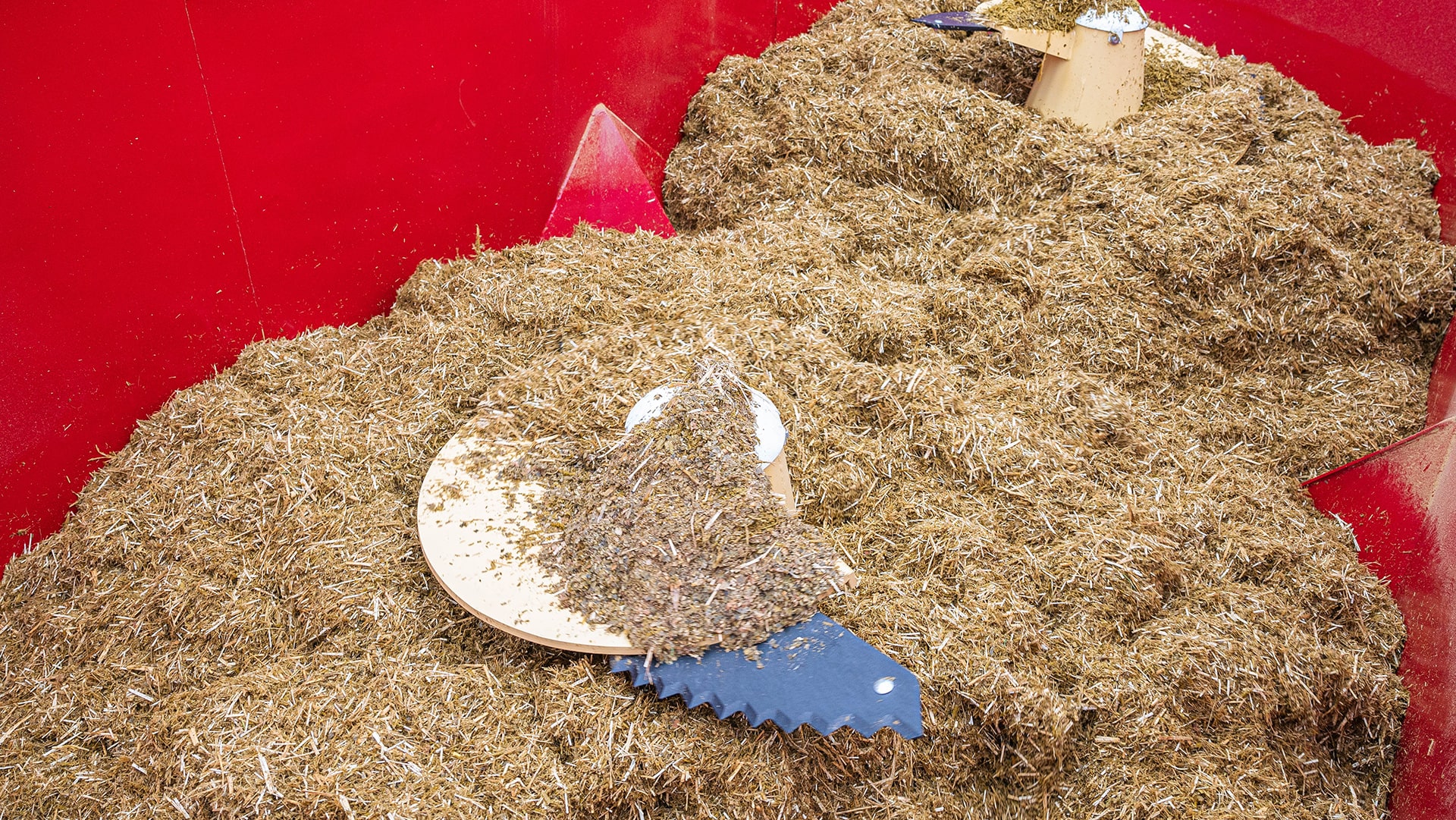

Why structure in the fodder?
For proper rumination, cattle require structure in their feed. Structure is what helps maintain the optimum pH value in the rumen. What is more, structured feed lowers the risk of such health problems as displacements of the bovine abomasum, and it boosts feed intake and improves overall feed conversion efficiency.
What does structure in the fodder actually mean?
The structure of the fodder plays a vital role in ensuring that your cattle is cared for to the best possible extent. To avoid low ph-values in the rumen, the feed ration always has to retain a sufficient degree of structure (provided by structure, alfalfa, hay, grass and maize silage). This structure promotes rumination and the salivation that goes along with it. Since saliva has an alkaline ph-value of 8-8.3, it assumes the important role of a buffer inside the rumen.
The key advantages of an optimum feed structure at a glance:
- The risk of health problems decreases, e. g. displacements of the bovine abomasum
- Feed acceptance increases
- Feed conversion efficiency can be improved
What happens if the fodder is devoid of structure?
The absence of structure in the cattle's feed can have tremendous impact on the health of the animals. The lack of structure in the feed prevents the cow / the bull from ruminating, resulting in hyperacidity of the rumen. These effects, in turn, affect the milk yield of the animals substantially. The milk they produce often shows a higher fat content. Once matured into a full-blown metabolic disease, acidosis will result in diminished performance. Over time, this condition can develop into displacements of the bovine abomasum, claw disorders and inflamed udders.
Work that is easy on the structure starts with using the right unloading technlogy
Maintaining a good structure starts as early as the time when straw, hay, grass and maize silage are unloaded. If ripped or milled out of the clamps, the fodder may sustain damage to its structure. This is why unloading equipment that leaves the structure intact has become more important than ever. BvL offers a host of different unloading implements that are ideal choices in this area. The profiled roller fitted on the BvL self-propelled mixer wagon V-MIX Drive Maximus is capable of removing fodder from the clamp in a way that is particularly gentle on the structure. Its gentle removal transforms the feed into an excellent basis for a Total Mixed Ration (TMR) that is of first-rate quality and highly structured.
How do I know if my fodder contains enough structure?
Use the agitator box to perform a simple test. The test lets you check your rations and adjust their individual ingredients if necessary.
TMR Portions in %
| at 3 Strainers | at 4 Strainers | |
|---|---|---|
| Top Strainer (19 mm) | 6 - 10 | 2 - 8 |
| Center Strainer (8 mm) | 30 - 50 | 30 - 50 |
| Bottom Strainer 1 (1,18 mm) | 40 - 60 | 30 - 50 |
| Bottom Strainer 2 (< 1, 18 mm) | - | < 20 |
